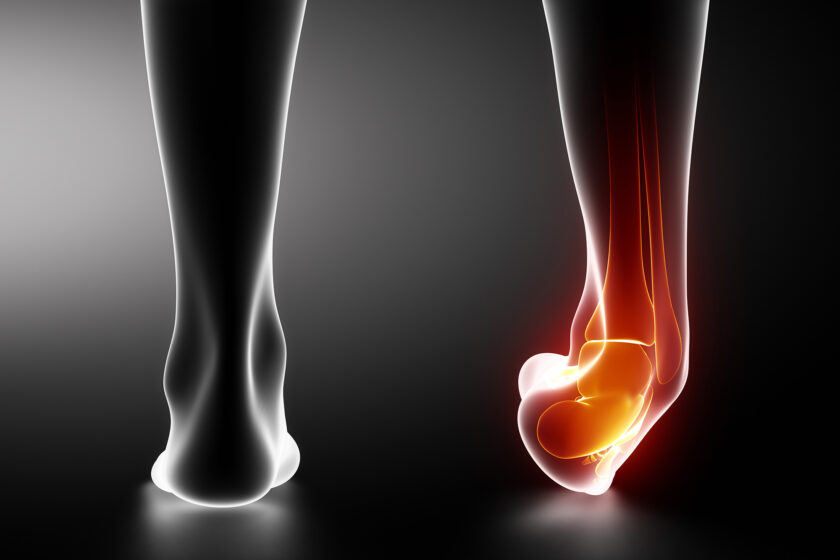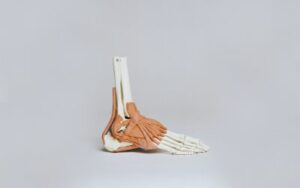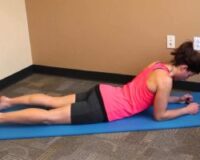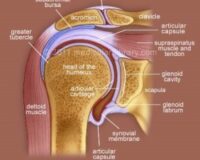
Lateral Ankle Sprain (LAS): A Brief Summary & The Role Of Physiotherapy
Lateral ankle sprain, otherwise known as an inversion sprain, is a very common injury in both the sporting and office work population. Physiotherapists here at our Adelaide based CBD clinic see a lot of this injury!
So what is an inversion sprain?
To understand this, let’s brush up on our anatomy. The ankle joint is made up of the following three bones.
- The tibia is the main shin bone, running from your knee to your foot
- The fibula is the smaller of the two lower leg bones
- The talus is a foot bone that fits into the shape created by both the tibia and fibula forming the lower portion.
Holding the lower leg bones to the foot are a series of ligaments, half of which cover the inner side of the ankle called the deltoid ligaments. The other half covers the outer side, the lateral ligaments. The role of these ligaments is to restrict excessive movements of the foot, especially when twisting the foot inwards/outwards.
When these ligaments are over-stressed, often by a forced “twisting in” movement, the tissue can become damaged, resulting in a ligament sprain.

So who gets inversion sprains?
An inversion sprain will generally be caused by one of two factors:
- 1. The sprain may be caused by a high-impact injury. In which someone may describe: “I was playing football and as I jumped to catch the ball I lost my balance slightly and landed funny on my foot. My ankle became very painful, hot and swollen.”
OR
- 2. The sprain may be due to weakness or deconditioning of the ankle. Where someone may describe: “I was walking the other day and out of nowhere rolled my ankle. It’s really painful, but I’m pretty used to it. It’s happened a few times now over the years.”
Common risks factors for inversion sprains
- Previous sprain/s of the ligaments causes an increased likelihood of re-injury.
- High BMI/overweight individuals are 4x more likely to sprain their ankle than those with a normal BMI
- Taller individuals are more at risk of suffering an ankle injury.
- Individuals participating in high impact sports such as football and basketball.
What do individuals usually report with an ankle sprain?
- Pain when twisting the foot inwards (0-4 days post injury) when injuring the outer ankle (and vice versa)
- Pain when pressing around the outer aspect of the foot and ankle joint
- The ankle/foot may be swollen, bruised or hot to touch 0-4 days following injury
So what could make it worse?
- Pain may increase when standing, walking or weight-bearing through the injured foot (0-4 days post injury)
- Symptoms can often worsen at night or first thing in the morning, but may relieve after a short while
- Continuing to play sport following an acute ankle injury
How can this injury be diagnosed?:
Generally a diagnosis can be made in an initial session following the subjective history and some physical testing. Scans can be performed if the pain doesn’t relieve in the expected timeframe, an inability to weight bear and take small steps within the first ~2 days or if there is any obvious bony deformity of the ankle/foot. An X-ray or ultrasound scan may be used.
Common physiotherapy treatments
Advice regarding PEACE protocols: In the acute stages of injury the following actions are recommended..
- Protection
- Elevation
- Avoiding anti-inflammatory drugs (not applicable in some situations)
- Compression
- Education
Manual therapy: Once the inflammation has subsided, foot/ankle mobilisation can aid in pain relief and help to restore range of motion in the short term.
Acupuncture: Increase activity and improve blood flow to the local area, promoting ankle healing.
Strapping, taping and bracing: External support can be used to protect the area in the acute stages of an injury and aid in movement along with acting as a sensory reminder of the injured structure whilst the area recovers.
Advice on supplements for injury recovery: Advice may be provided on nutrient intake, such as the increased demand for protein, up to 2.2g/kg (that’s a lot!) when injured.
Equip you with specialist equipment, such as foam rollers, bands, etc.
In addition to educating and prescribing a treatment approach, a physio is able to equip the individual with all the necessary equipment for their rehab journey. This may include resistance equipment, orthotics, braces, mats or mobility aids.
What exercises can you do in the first 0-2 weeks?
- Alphabet ankle rolls
- Toe pointing up and down (“good toes, naughty toes”)
- Towel stretch (towel around toes and gently stretch back)
- Standing calf stretch
Key messages
- LAS is generally caused by rolling the ankle inwards/awkward landing and can cause sudden sharp pain at the outer ankle region.
- Younger individuals participating in sports such as basketball and football are most likely to experience LAS.
- Initially after injury (0-4 days), pain may increase on standing, walking or weight-bearing through the foot
- Scans can be used if there is any obvious bony abnormality or if sharp pain (which limits walking) persists
- Conservative physiotherapy treatment including joint mobilisation, taping and progressive strengthening can reduce symptoms and address the root cause of the issue.
Disclaimer
Please consult with a qualified health professional if you are having any significant pain doing these exercises, or alternatively to progress your exercises as your ankle strengthens! We would love to chat over the phone if you have any concerns/questions! Call us on 8221 5011.
None of the information in this article is a replacement for proper medical advice. Always see a medical professional for advice on your injury.
To know more about LAS and to get an assessment, book to see one of our physios through the link below:
Book Appointment



